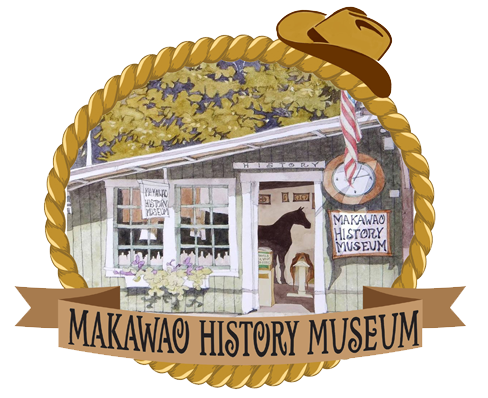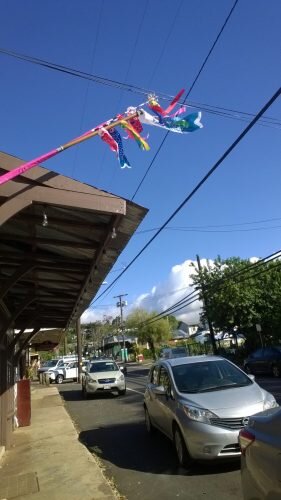Boys Day At The Museum
Stop by the museum to see our giant koi (carp) wind sock pictured here, spanning from the front area into the back room. The smaller koi streamed outside the museum from a long pole high in the air on Boys Day, or Tango no Sekku. This traditional Japanese holiday was brought to Hawai’i by early immigrants working in the cane and pineapple fields. On the 5th day of the 5th month families bring out special windsocks made of fabric in the shape of koi fish (carp) to hang from a pole on their homes and fly in the wind. From ancient past the holiday honored the sons of the home and there was a different fish for each of the sons and their father. In 1948 Boys Day was changed to Childrens Day and made a national holiday in Japan to honor all childrens personalities and for blessings of good health and happiness in their lives. Some families stick to old traditions while others present a koi for each member of the family. Koi fish represent strength, success, and determination because they are able to swim upstream against powerful currents. When the koi blow in the wind they look like they’re swimming.
A special military helmet called kabuki, swords, armor, and male dolls may be displayed indoors on a table or altar as a reminder of the strong and spirited folk heroes of Japan who lived exemplary lives. Speciall food may also eaten, like kashiwa-mochi (rice cakes) filled with bean paste and wrapped in oak leaves that represent strength, and chimaki (dumplings) wrapped in bamboo leaves or in iris petals to bring good luck. With the mixing of cultures in Hawai’i this tradition has spread into homes of many nationalities, and you can see the magical koi flying in the sky all over the islands. Mahalo to the Matsukawa family for lending us the beautiful koi fish.


